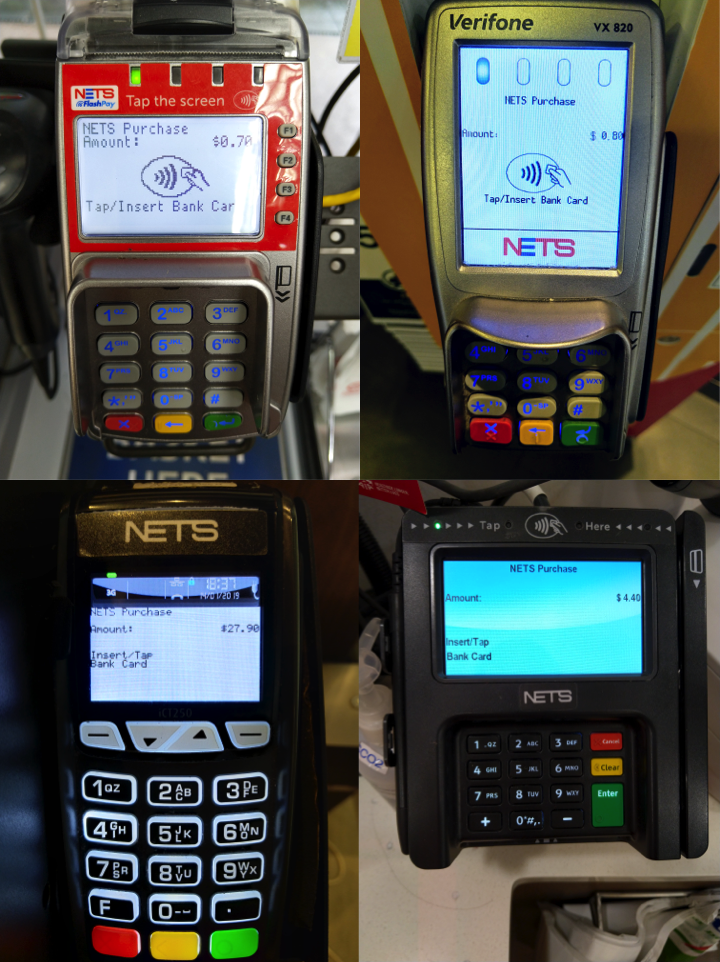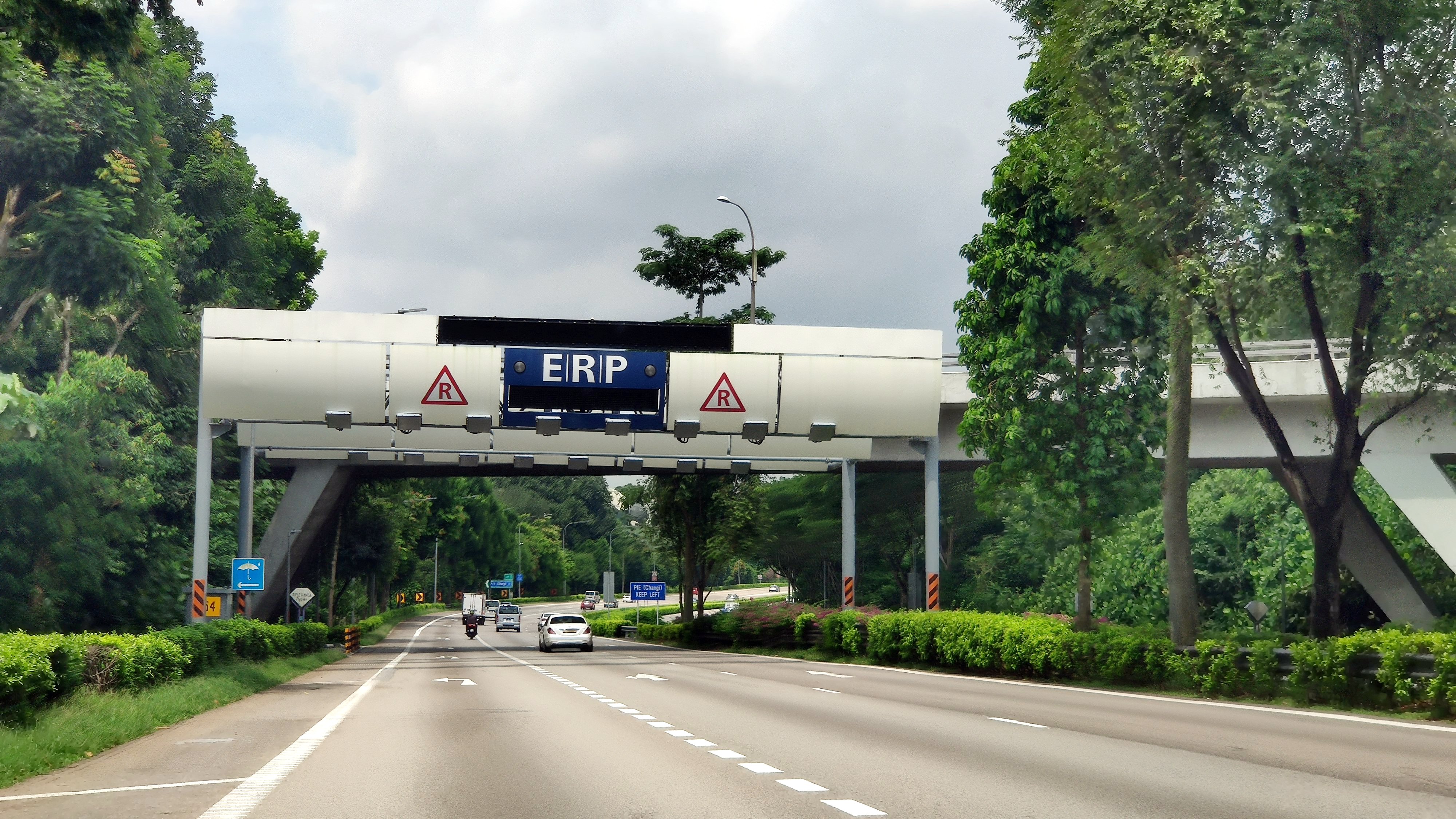|
EZ-Link
The EZ-Link card is a rechargeable contactless smart card and electronic money system that is primarily used as a payment method for public transport such as bus and rail lines in Singapore. A standard EZ-Link card is a ISO/IEC 7810, credit-card-sized Stored-value card, stored-value contact-less smart-card that comes in a variety of colours, as well as limited edition designs. It is sold by SimplyGo Pte Ltd, a merged entity of TransitLink and EZ-Link since 2024, a subsidiary of the Land Transport Authority (LTA), and can be used on travel modes across Singapore, including the Mass Rapid Transit (Singapore), Mass Rapid Transit (MRT), the Light Rail Transit (Singapore), Light Rail Transit (LRT), Public buses of Singapore, public buses which are operated by SBS Transit, SMRT Buses, Tower Transit Singapore and Go-Ahead Singapore, as well as the Sentosa Express. Established in 2001, the first generation of the card was based on the Sony FeliCa smart card technology and was promoted ... [...More Info...] [...Related Items...] OR: [Wikipedia] [Google] [Baidu] |
CEPAS
CEPAS, the Specification for Contactless e-Purse Application, is a Singapore Singapore, officially the Republic of Singapore, is an island country and city-state in Southeast Asia. The country's territory comprises one main island, 63 satellite islands and islets, and one outlying islet. It is about one degree ...an specification for an electronic money smart card. The specification was prepared by the Cards and Personnel Identification Technical Committee (CPITC), under the purview of the IT Standard Committee of Singapore (ITSCS). It has been gazetted as Singapore Standard SS 518 by Enterprise Singapore. CEPAS has been deployed island-wide, replacing the previous original EZ-Link card effective 1 October 2009. Function The CEPAS provides the command sets and data bytes that can be used for contactless e-purse applications and focuses on the debit and Debits and credits, credit areas. The most recent version of the standard is CEPAS 3.0, which adds support for acc ... [...More Info...] [...Related Items...] OR: [Wikipedia] [Google] [Baidu] |
Mass Rapid Transit (Singapore)
The Mass Rapid Transit system, locally known by the Acronym, initialism MRT, is a rapid transit system in Singapore and the island country's principal mode of Rail transport in Singapore, railway transportation. After two decades of planning the system commenced operations in November 1987 with an initial stretch consisting of five stations. The network has since grown to span the length and breadth of the country's Singapore Island, main island – with the exception of the Central Catchment Nature Reserve, forested core and the rural Lim Chu Kang, northwestern region – in accordance with Singapore's aim of developing a comprehensive rail network as the backbone of the country's Transport in Singapore, public transportation system,Singapore's heavy rail network is composed of three distinct systems. Two of the three are rapid transit networks, chiefly a) the MRT system, which falls entirely within the city-state and forms the core of the network, and b) the two-station cross- ... [...More Info...] [...Related Items...] OR: [Wikipedia] [Google] [Baidu] |
NETS FlashPay
Network for Electronic Transfers, colloquially known as NETS, is a Singaporean electronic payment service provider. Founded in 1986 by a consortium of local banks, it aims to establish the debit network and drive the adoption of electronic payments in Singapore. It is owned by DBS Bank, OCBC Bank and United Overseas Bank (UOB). The NETS Group (comprising NETS, BCS and BCSIS) provides a full suite of payments and financial processing services including direct debit and credit payments at point-of-sale (NETS) and online (eNETS), mobile payments (NETSPay), card services (CashCard, FlashPay card), electronic funds transfer (FAST, PayNow, GIRO) and payment and clearing services (Real-Time Gross Settlement, Cheque Truncation System). NETS is also a member of the Asian Payment Network (APN) and a council member of UnionPay International. History NETS was first introduced to the public on 27 June 1985 as a 2-month pilot project involving 10,000 ATM card holders from the five local ba ... [...More Info...] [...Related Items...] OR: [Wikipedia] [Google] [Baidu] |
Electronic Road Pricing
The Electronic Road Pricing (ERP) system is an electronic toll collection scheme adopted in Singapore to manage traffic by way of road pricing, and as a usage-based taxation mechanism to complement the purchase-based Certificate of Entitlement system. There are a total of 93 ERP gantries located throughout the country, along expressways and roads leading towards the Central Area. As of July 2024, only 19 ERP gantries are in operation and are all in expressways where congestion continues to be severe. The ERP was implemented by the Land Transport Authority (LTA) on 1 April 1998 to replace the preceding Singapore Area Licensing Scheme (ALS) that was first introduced on 11 August 1974 after successfully stress-testing the system with vehicles running at high speed. The system uses open road tolling; vehicles do not stop or slow down to pay tolls. [...More Info...] [...Related Items...] OR: [Wikipedia] [Google] [Baidu] |
FeliCa
FeliCa is a contactless RFID smart card system from Sony in Japan, primarily used in electronic money cards. The name stands for ''Felicity Card''. First utilized in the Octopus card system in Hong Kong, the technology is used in a variety of cards also in countries such as Singapore, Japan, Indonesia, Macau, the Philippines and the United States. Technology FeliCa's encryption key is dynamically generated each time mutual authentication is performed, preventing fraud such as impersonation. FeliCa is externally powered, i.e. it does not need a battery to operate. The card uses power supplied from the special FeliCa card reader when the card comes in range. When the data transfer is complete, the reader will stop the supply of power. FeliCa was proposed for ISO/IEC 14443 Type C but was rejected. However, ISO/IEC 18092 (Near Field Communication) uses some similar modulation methods. It uses Manchester coding at 212 kbit/s in the 13.56 MHz range. A proximity of 10 cen ... [...More Info...] [...Related Items...] OR: [Wikipedia] [Google] [Baidu] |
Public Buses Of Singapore
Public transport bus services form a significant part of public transport in Singapore, with over 3.6 million rides taken per day on average as of December 2021. There are over 300 scheduled bus services and over 100 short-trip variants, operated by SBS Transit, SMRT Buses, Tower Transit Singapore and Go-Ahead Singapore. The newest bus operator, Go-Ahead Singapore, started operations on 4 September 2016. In total, there are around 5,800 buses in operation as of 2024. History Early history Buses were first introduced into Singapore when the Singapore Traction Company (STC) was established under the Singapore Traction Company Ordinance of 1925 to replace the ill-fated Trams in Singapore, electric tramway with a Trolleybuses in Singapore, trolleybus system. The first trolleybuses began operations on 14 August 1926 between Joo Chiat Road and Tanjong Pagar whereas trams were phased out by 1927, with 66 trolleybuses plying on six routes with a mileage of 15” by 30 September that ... [...More Info...] [...Related Items...] OR: [Wikipedia] [Google] [Baidu] |
Sentosa Express
The Sentosa Express is a monorail line connecting Sentosa island to HarbourFront on the Singapore mainland. It was built at a cost of S$140 million to replace the previous Sentosa Monorail. Development began in June 2003 and construction works were completed in late 2006. The fully elevated 2.1-kilometre (1.3-mile; per direction) two-way line (4.3-km total track length) opened on 15 January 2007. The monorail system, privately owned by Sentosa Development Corporation and operated by Singapore Mass Rapid Transit, can move up to 4,000 passengers per hour per direction. History In June 2002, the Sentosa Development Corporation (SDC) awarded a contract to Japanese subsidiary Hitachi Asia to build the Sentosa Express, which was part of a ten-year redevelopment plan for Sentosa, an offshore island south of the Singapore main island dedicated to tourism. It was to replace the Sentosa Monorail which had been in operation since 1982, with the previous monorail planned for ... [...More Info...] [...Related Items...] OR: [Wikipedia] [Google] [Baidu] |
Stored-value Card
A stored-value card (SVC) or cash card is a payment card with a monetary value stored on the card itself, not in an external account maintained by a financial institution. This means no network access is required by the payment collection terminals as funds can be withdrawn and deposited straight from the card. Like cash, payment cards can be used anonymously as the person holding the card can use the funds. They are an electronic development of token coins and are typically used in low-value payment systems or where network access is difficult or expensive to implement, such as parking machines, public transport systems, and closed payment systems in locations such as ships. Stored-value cards differ from debit cards, where money is on deposit with the issuer, and credit cards which are subject to credit limits set by the issuer and are connected to accounts at financial institutions. Another difference between stored-value cards and debit and credit cards is that debit and cre ... [...More Info...] [...Related Items...] OR: [Wikipedia] [Google] [Baidu] |
Contactless Smart Card
A contactless smart card is a contactless credential whose dimensions are credit card size. Its embedded integrated circuits can store (and sometimes process) data and communicate with a terminal via NFC. Commonplace uses include transit tickets, bank cards and passports. There are two broad categories of contactless smart cards. Memory cards contain non-volatile memory storage components, and perhaps some specific security logic. Contactless smart cards contain read-only RFID called CSN (Card Serial Number) or UID, and a re-writeable smart card microchip that can be transcribed via radio waves. Overview A contactless smart card is characterized as follows: *Dimensions are normally credit card size. The ID-1 of ISO/IEC 7810 standard defines them as 85.60 × 53.98 × 0.76 mm (3.370 × 2.125 × 0.030 in). *Contains a security system with tamper-resistant properties (e.g. a secure cryptoprocessor, secure file system, human-readable features) and is capable of providi ... [...More Info...] [...Related Items...] OR: [Wikipedia] [Google] [Baidu] |
Light Rail Transit (Singapore)
The Light Rail Transit system, locally known by the Acronym, initialism LRT, are a series of localised automated guideway transit (AGT) systems in Singapore which acts as feeder services to the rapid transit, heavy rail Mass Rapid Transit (Singapore), Mass Rapid Transit (MRT), and together forms the core of the country's Rail transport in Singapore, rail transport services. The first LRT line was opened in 1999 and the system has since expanded to two lines, each serving three New towns of Singapore, new towns, namely Bukit Panjang LRT line, Bukit Panjang, Sengkang LRT line, Sengkang and Punggol LRT line, Punggol, with a total system length of approximately . Trains on these lines have at least one station interchange link to the MRT. The conventional definition of light rail generally refers to an upgraded form of tram that uses articulated low-floor tram cars and partial grade separation; in some cases such as the Docklands Light Railway (DLR) in London or the SkyTrain (Vancou ... [...More Info...] [...Related Items...] OR: [Wikipedia] [Google] [Baidu] |
Contactless Smart Card
A contactless smart card is a contactless credential whose dimensions are credit card size. Its embedded integrated circuits can store (and sometimes process) data and communicate with a terminal via NFC. Commonplace uses include transit tickets, bank cards and passports. There are two broad categories of contactless smart cards. Memory cards contain non-volatile memory storage components, and perhaps some specific security logic. Contactless smart cards contain read-only RFID called CSN (Card Serial Number) or UID, and a re-writeable smart card microchip that can be transcribed via radio waves. Overview A contactless smart card is characterized as follows: *Dimensions are normally credit card size. The ID-1 of ISO/IEC 7810 standard defines them as 85.60 × 53.98 × 0.76 mm (3.370 × 2.125 × 0.030 in). *Contains a security system with tamper-resistant properties (e.g. a secure cryptoprocessor, secure file system, human-readable features) and is capable of providi ... [...More Info...] [...Related Items...] OR: [Wikipedia] [Google] [Baidu] |






